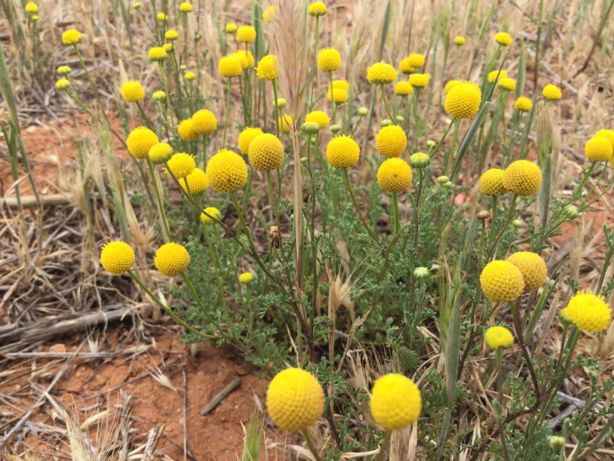Paddock Practices: Herbicide timing key in managing matricaria
Date: 23 Jun 2020
Key points
- It is important to understand weed identification and phenology when managing matricaria
- Results from field trials indicate timing of herbicide application is key to controlling matricaria
- Cost effective herbicide options are available for the control of matricaria in sub-clover pastures
- Matricaria is an extremely invasive and fast spreading weed which requires due caution
Correct identification followed by timely herbicide application are two key factors in the successful management of the weed matricaria.
Since first appearing in Western Australia’s eastern wheatbelt in the late 1960s, matricaria has spread to neighbouring regions and developed into a weed of serious concern for growers, particularly those in the Geraldton and Kwinana port zones.
Known for its distinctive foul smell, matricaria is particularly problematic in pasture and fallow situations. On average, it sets between 3000 and 5000 small seeds per plant and in ungrazed areas it can produce up to 100,000 seeds per plant.
Identification and phenology
There are two species of matricaria active in WA, distinguished by their differing flower heads.
Both are bright yellow in colour, however, Columba Daisy heads are shaped more like a club, while Globe Chamomile flower heads are rounder. Globe Chamomile is known to be the more common species of the two.

Department of Primary Industries and Regional Development (DPIRD) research officer Alex Douglas is studying matricaria as part of a five-year project with investment by the GRDC, researching a number of locally significant weeds in WA.
“Growers who are unsure whether matricaria has spread onto their farm can help identify the weed by rubbing the small plants between their fingers, as matricaria has a rank, herby smell,” Ms Douglas said.
“Most matricaria seed germinates in autumn, although a few plants may germinate in late winter or early spring and continue to grow over summer.”
The trials Ms Douglas is conducting have also provided some insight into seed dormancy of matricaria.
“We have found matricaria seed survives well when buried at two to 10 centimetres beneath the soil surface and that, under laboratory conditions, darkness inhibits its germination,” Ms Douglas said.
“Matricaria seed is likely to survive in the soil for several years if it is buried. Cultivation treatments like soil inversion could bury seed to depths where it remains viable and potentially germinate years later if brought to the soil surface.”
Timing is key
Control of matricaria is crucial, especially when paddocks are left to pasture or fallow, to reduce the weed seed bank for future grain crops.
Trials testing herbicide timing have shown that early herbicide applications are most effective for control, particularly when the weed is at the six to eight-leaf stage ranging up to the 8cm rosette stage.

Development of matricaria is a key indicator of when herbicide will be most effective rather than time of the season.
The level of rainfall will largely dictate this, so properly monitoring affected paddocks to identify the weed’s growth stage is highly recommended.
If the matricaria population was not controlled earlier in the season, late season spray topping with a non-selective herbicide can reduce seed set as a salvage option.
Timing is also very important if spray topping. This method is most effective during early flowering and research has shown seed viability can be reduced by up to 99 per cent using this method of control.
Cost-effective herbicide measures
Effective herbicide options include Jaguar® (bromoxynil and diflufenican) and Bromoxynil 200, both of which provide good control of younger matricaria in certain cereals and pastures.
Non-selective herbicides such as glyphosate and paraquat can be applied late in the season when spray-topping pastures during the matricaria flowering stage.
Trials have also shown that, in fallow situations, a three-way mix of glyphosate applied with 2,4-D and carfentrazone, as well as paraquat mixed with carfentrazone, provided the greatest level of control.
Proceed with caution
Ms Douglas says any spring rain can result in matricaria germinating late and persisting into summer, which then poses a problem for further seed set.
“Halting the spread of the weed must now be a key priority for the industry,” she said.
"This is such an invasive weed that it needs to be controlled urgently to reduce its impact on future farm profitability.
"With many growers owning or managing properties in different locations, our concern is that the weed could be transported on machinery and moved across the grain growing areas, spreading the problem into non-traditional matricaria zones."
More information
Alex Douglas
0455 067 755
alex.douglas@dpird.wa.gov.au
Useful resources
GRDC Project Code: DAW1607-002RTX,
Was this page helpful?
YOUR FEEDBACK
